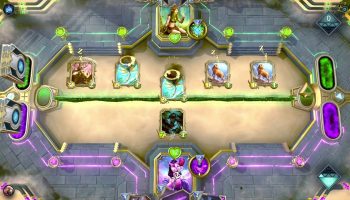Hey,
I've noticed that in this community, decks are frequently qualified as "midrange" but the definition thereof is… uncertain.
Let's get back to the basics. What does "midrange" originally refer to in Magic and other CCGs? The origin of the term is that a midrange deck is simply faster than aggro and slower than control, hence the "mid" aspect. But a definition in terms of speed doesn't work well with Gwent, since we have a fixed number of turns. Unless someone gets 2-0'd, most games last 16 turns or close to, when one player forfeits. The closest we have is a preference for short or long rounds.
In terms of playstyle, in Magic still a midrange deck usually favors board control, value, adaptability and card advantage, while aggro decks are willing to make unfavorable trades as long as they dish out damage (the legendary Burn in the face is a 0-for-1 trade), and control decks often don't play many creatures and seek mostly to survive until they've set up their loop of inevitability. Now in Gwent, since there's no life total and everyone is playing units, the notion once again doesn't translate easily. Perhaps one take-away is that a midrange Gwent deck needs some form of interaction to out-value the opponent, as in "kill a unit and leave some points on your side of the board", and thus a non-interactive Solitaire engine deck can't qualify.
And lastly, there's the rock-paper-scissors aspect: aggro beats control, control beats midrange, midrange beats aggro. In general of course, in very broad strokes. What we have in Gwent (in broad strokes again) is: engine beats pointslam, pointslam beats control, control beats engine. Where does midrange fit in?
Which brings me to the various definitions I've seen implied for the term, here and there. Let's look at one deck that's most often referred to as "midrange": NG Renfri. This deck is also often referred to as "pointslam": is pointslam, in fact, a synonym of midrange?
But this list also has a fair amount of control in the form of locks, and is hated for it: is that "jack-of-all-trade" aspect an important component of the definition? This ties into what I said earlier, about midrange requiring some form of interaction.
Lastly, that particular deck is also reviled for highlighting the game's powercreep issues, and playing units or packages that are very strong in isolation. Does midrange, then, mean "good stuff deck" putting together high-value cards, with no regards for synergy or overall game plan? This, again, ties into one aspect of midrange Magic decks, that don't rely on a single win-con or game plan, but instead favor adaptability in the form of overall strong cards.
As you can see, I'm quite confused as to what people mean with midrange, and I surmise not everyone means the same thing.
Thanks for your thoughts.
Source: https://www.reddit.com/r/gwent/comments/z7qn8v/on_the_vague_definition_of_midrange_in_this_game/







